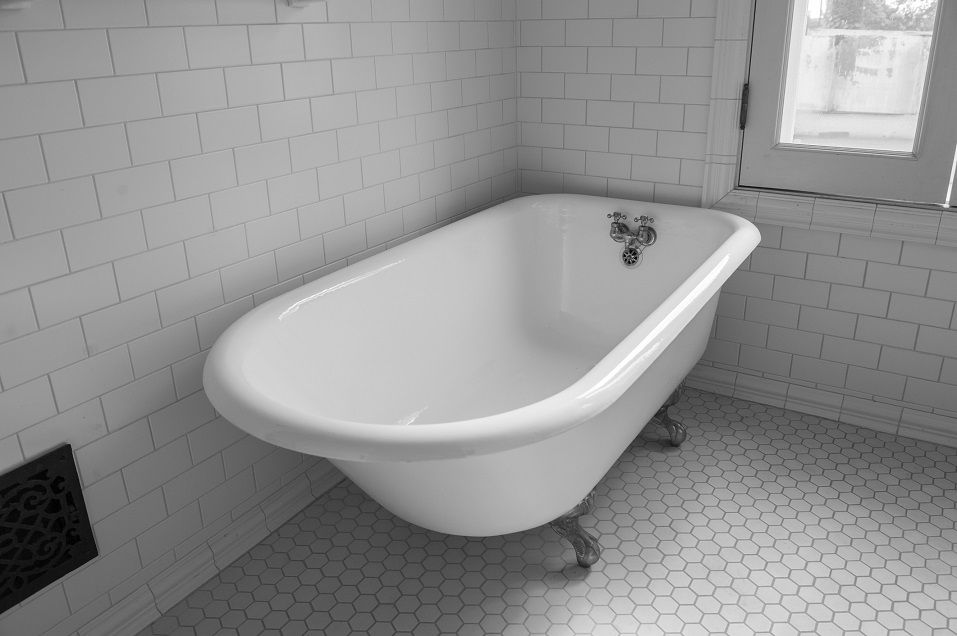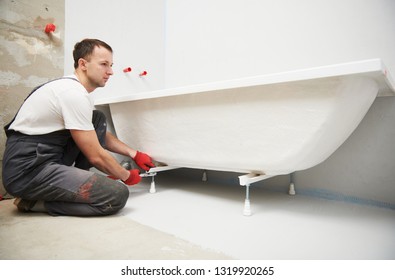Exactly How to Set up a Tub Yourself
Exactly How to Set up a Tub Yourself
Blog Article
Here in the next paragraph you'll find a bunch of exceptional facts on the subject of A Step-by-Step Guide to Installing a Bathtub.

Setting up a tub isn't specifically brain surgery, yet it does call for strong plumbing, woodworking, and also occasionally, tiling abilities. Changing an old bath tub with a brand-new one is additionally a reasonably hard task. If the old bathtub is conveniently obtainable, the task can relocate easily; if you need to open up a wall surface to eliminate the old tub as well as position the new bathtub, the task is a lot harder. In either instance, the task is within a residence handyman's abilities, although you will need a helper to move out the old tub and also embeded in the brand-new one. Make certain you have qualified yourself for the job and also fit trying it. Instead of hiring a contractor to take control of a halfway-completed job, it is much better to think about employing one prior to you start. Possibilities are you may need a specialist plumber to make tube links.
This post will help you mount a brand-new tub in your restroom if you have currently gotten a new tub and also don't need to transform the setup of your previous supply of water pipelines.
Your tools and also material checklist must comprise the following:
Removing Old Touches
If you need to change old taps with brand-new ones as a part of your installation, after that the first thing you ought to do is separate the supply of water. After doing so, activate the taps to drain pipes any type of water continuing to be in the system. The process of eliminating the existing taps can be fairly troublesome because of the restricted accessibility that is typically the case.
Make use of a container wrench (crowsfoot spanner) or a tap device to reverse the nut that connects the supply pipelines to the faucets. Have a fabric all set for the remaining water that will certainly come from the pipes. As soon as the supply pipes have been gotten rid of, utilize the very same device to loosen the nut that holds the faucets onto the bath/basin. You will certainly need to quit the single faucets from turning during this procedure. Once the faucets have been gotten rid of, the holes in the bath/basin will certainly have to be cleaned up of any old sealing substance.
Before going on to fit the new faucets, contrast the pipe links on the old taps to the brand-new faucets. If the old taps are longer than the brand-new faucets, then a shank adapter is required for the brand-new faucets to fit.
Fitting New Taps
If the tails of the brand-new faucets are plastic, then you will require a plastic adapter to prevent damage to the string. One end of the port fits on the plastic tail of the faucet and also the various other end provides a link to the current supply pipes.
If you require to fit a monobloc, after that you will need lowering couplers, which attaches the 10mm pipe of the monobloc to the common 15mm supply pipe.
Next, place the faucet in the mounting hole in the bath/basin making certain that the washers are in location in between the tap as well as the sink. Protect the faucet in place with the manufacturer provided backnut. When the faucet is securely in position, the supply pipelines can be connected to the tails of the faucets. The faucets can either be connected by utilizing corrugated copper piping or with regular tap ports. The previous type should be linked to the faucet finishes initially, tightening up only by hand. The supply pipes can later be linked to the various other end. Tighten up both ends with a spanner after both ends have actually been connected.
Installing the Tub
Using the two wood boards under its feet, position the bathtub in the required setting. The wood boards are handy in evenly spreading the weight of the tub over the location of the boards instead of focusing all the weight onto four little points.
The following objective is to make sure that the bath tub is leveled all round. This can be attained by inspecting the level and also readjusting the feet on the bath tub till the level reviews degree.
To mount taps, fit all-time low of the outermost adaptable faucet adapter to the appropriate supply pipe by making a compression join; then do the exact same for the various other faucet.
Activate the water and also examine all joints and new pipework for leaks and tighten them if required. Fill up the tub and likewise inspect the overflow electrical outlet as well as the typical electrical outlet for leakages.
Lastly, take care of the bathroom paneling as defined in the maker's user's manual. Tiling as well as securing around the tub ought to wait up until the tub has been used at least once as this will certainly resolve it right into its last setting.
Getting ready for the Setup
First of all, the supporting frame supplied with the bath needs to be fitted (if called for) according to the supplier's guidelines. Next off, fit the taps or mixer to the bathtub. When fitting the faucet block, it is necessary to see to it that if the faucet includes a plastic washer, it is fitted between the bathroom and also the faucets. On a plastic bath, it is also sensible to fit a sustaining plate under the faucets system to prevent strain on the bath tub.
Fit the versatile tap connectors to the bottom of both faucets utilizing 2 nuts and olives (occasionally provided with the bathtub). Fit the plug-hole outlet by smearing mastic filler round the sink electrical outlet opening, and after that pass the outlet via the hole in the bathroom. Utilize the nut supplied by the supplier to fit the plug-hole. Take a look at the plug-hole outlet for an inlet on the side for the overflow pipe.
Next off, fit the end of the flexible overflow pipeline to the overflow outlet. After that, screw the pipeline to the overflow face which must be fitted inside the bath. See to it you utilize all of the provided washers.
Connect the catch to the bottom of the waste outlet on the bathtub by winding the thread of the waste outlet with silicone mastic or PTFE tape, and also screw on the catch to the outlet. Attach the bottom of the overflow tube in a comparable manner.The bath should currently be ready to be suited its final placement.
Tiling Around the Tub
In the location where the bathroom meets the ceramic tile, it is required to secure the joins with a silicone rubber caulking. This is necessary as the fitting can relocate enough to crack a stiff seal, causing the water to permeate the wall in between the bathroom and also the tiling, resulting in difficulties with wetness as well as feasible leaks to the ceiling listed below.
You can pick from a variety of coloured sealants to assimilate your fixtures as well as installations. They are marketed in tubes and cartridges, as well as can sealing spaces approximately a width of 3mm (1/8 inch). If you have a larger space to load, you can fill it with twists of drenched paper or soft rope. Remember to always load the bath tub with water before sealing, to permit the activity experienced when the tub is in usage. The sealer can crack fairly early if you do not think about this movement before sealing.
Additionally, ceramic coving or quadrant floor tiles can be used to edge the bath or shower tray. Plastic strips of coving, which are easy to use as well as reduce to dimension, are also easily offered on the marketplace. It is suggested to fit the floor tiles making use of water-resistant or waterproof sticky as well as cement.
Bathtub Installation
How Important Is A Bathtub To Your Home?
High-quality baths, showers, and other bathroom updates are necessary when considering a smart investment in your home. It’s a room that you go to every day and one that is constantly being used by guests.The bathroom is one of the top trafficked rooms in a home and also one of the most valuable in terms of home resale.
Install Piping Before Tub
You will be using your existing drain and waste vent system, but pipes required include the hot and cold water supply lines and a pipe leading to a shower head. A mixing valve and shower head are also needed. Air chambers may be required.
Position the Tub
Lower the tub into place so that the continuous flange fits against the wall studs and rests on 1’x4' or 2’x4' supports. Anchor the tub to the enclosure with nails or screws inserted through the flanges into the studs.
NOTE: Remember, bathtubs and shower stalls may require support framing. A bathtub filled with water is extremely heavy, so check building codes and framing support before installing the tub.
Assemble Drain Connections
Assemble the bathtub drain connections by connecting the tub overflow with the tub drain above the trap, not beyond it. The trap will have a compression fitting that screws over the arm of the overflow assembly.
Place a Pipe For the Shower Head
First, locate a brass female threaded winged fitting and attach it to a framing support via a screw or a nail. Then run a pipe up the wall for the shower head. Sweat or solder the other side of the brass fitting to the top of the pipe.
Attaching Hot and Cold Water Lines
Attach your water lines for both hot and cold by sweating these directly into the hot and cold ports of the mixing valve. The mixing valve will be how water enters the tub’s system, not by the pipes themselves.
Install the Spout
Extend a piece of 1/2 inch pipe, or whichever length is specified in the manufacturer’s instructions, for the tub spout. Sweat on a male threaded fitting at the end of the pipe or use a brass nipple of the proper length and a 1/2 inch cap.
NOTE: At this point you should have your rough-in plumbing work inspected before proceeding further.
Check For Leaks
Restore the water pressure and check the drain connection and the supply pipes for any sign of leaking.
estore the Bathroom Wall
Replace the wall with moisture-resistant drywall as a base for your wall covering. Seal the joints between the wall and your new tub with silicone caulk as protection against water seepage.
https://www.berkeys.com/2016/12/02/bathtub-installation-dallas/

As a serious person who reads about A Step-by-Step Guide to Installing a Bathtub, I think sharing that piece of content was essential. For those who appreciated our page plz make sure you remember to share it. Thanks a lot for your time. Visit again soon.
Set An Appointment
Report this page